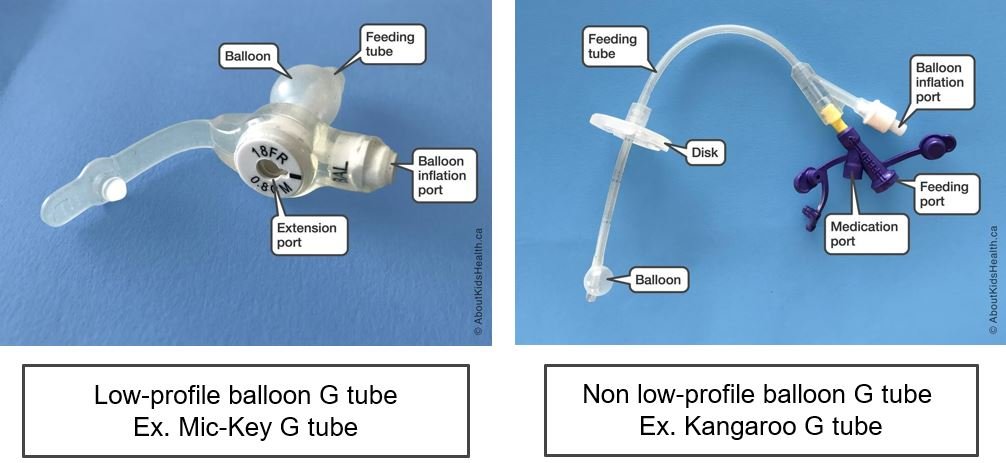HINT: What is the best practice for changing a balloon G tube?
Connected Care Quick Hits are up to date and evidence based recommendations for the care of children with medical complexity & technology dependence, from hospital to home.
HINT: What is the best practice for changing a balloon G tube?
SITUATION:
This Quick Hit was informed by Connected Care Live consults from home and community care providers about changing balloon G tubes, as well as recent updates to best practice guidelines regarding confirming placement of balloon G tubes after insertion.
BACKGROUND:
Many children with medical complexity rely on G tubes to support nutrition and/or medication administration. A balloon G tube is a type of feeding tube that has a balloon on the end which sits inside the stomach to keep the tube in place and prevent it from being pulled out.
Types of balloon G tubes include low-profile and non low-profile. A low-profile balloon G tube sits close to the skin and is easy to conceal. A non low-profile balloon G tube extends further out of the stomach and has a disk on the outside to prevent it from moving too far into the stomach.
ASSESSMENT:
Balloon G tubes are recommended to be changed every six to eight months, or as needed. This prevents the balloon from leaking or breaking which can cause the G tube to be accidentally dislodged.
Check the amount of water in the balloon once a week. This will help you to know if the balloon is damaged. If there is a difference of more than 0.5 mL of water from what you put in and what you remove, the balloon may be damaged (leaking) and the tube may need to be replaced. If the balloon is broken, the G tube can be temporarily taped to the skin until you are ready to change it. This will prevent accidental dislodgement.
When changing a balloon G tube, there are potential risks involved including:
Infection: When you replace the tube, the stoma and tract may become irritated and bacteria can be introduced, which increases the risk of infection. Wash the stoma prior to inserting the new tube to help prevent infection.
Increased hypergranulation tissue: Removing an old tube and inserting a new one can irritate the stoma and cause hypergranulation tissue to develop.
Perforation: When inserting a new tube, the tube may not be inserted into the existing tract which may create a new tract and space inside the body.
RECOMMENDATION:
Connected Care recommends the following for changing a balloon G tube:
Partner with the child's family caregiver to establish a way to keep track of when routine tube changes are due and who will perform them.
Review the following AboutKidsHealth video and article which include step-by step instructions for changing a balloon G tube.
Once the new G tube is in place, confirm that the tube is in the stomach prior to inflating the balloon. Placement of the G tube is confirmed by checking the pH of the contents that are aspirated from the tube. The following AboutKidsHealth article outlines how to confirm placement of the G tube.
After the placement is confirmed, inflate the balloon with the required amount of sterile or distilled water.
Assess the stoma for redness, discharge, rash or hypergranulation tissue.
Monitor for signs of feeding intolerance or severe pain once the new tube is inserted. Stop using the G tube and seek medical attention if these signs and symptoms are present and arrange to have the tube placement checked.
If you are not able to insert the balloon G tube, use the child's G tube emergency kit to insert a temporary Foley catheter. The following AboutKidsHealth article outlines the steps for inserting a Foley catheter.
Connected Care Live is not to be used in the event of an emergency.













